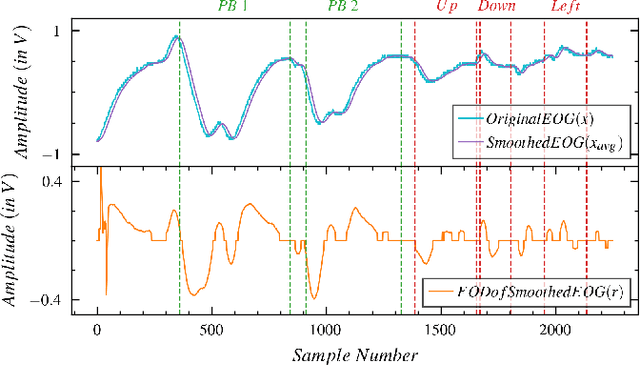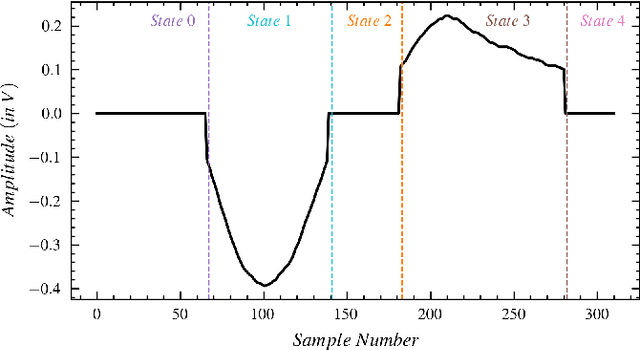Aditya Kale
Real-Time Detection of Drowsiness Among Vehicle Drivers: A Machine Learning Algorithm for Embedded Systems
Nov 04, 2021



Abstract:Numerous studies have established the necessity for developing safety equipment to detect drowsiness among vehicle drivers. However, for reliable implementations, such systems must employ dependable sources of stimuli; through Electrooculography (EOG), the tendencies of drowsiness can be directly sensed by measuring blinks of prolonged durations. While conventional machine learning (ML) algorithms can be utilized for the detection and classification of these prolonged blinks (PB), executing them on microcontroller units (MCU) may prove to be a laborious task. Hence, by keeping resource constraints and practicality in mind, an ML algorithm is proposed in this study to identify PBs executed by an individual with desirable accuracy and precision while being efficient enough to be deployed on portable wearables using economic MCUs. Furthermore, the suggested algorithm is subjected to multiple rounds of testing in this study thereby, establishing its possibility as a feasible drowsiness detection measure for wearable systems.
 Add to Chrome
Add to Chrome Add to Firefox
Add to Firefox Add to Edge
Add to Edge